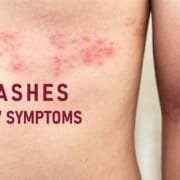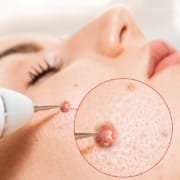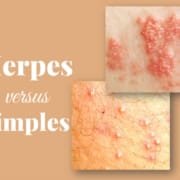How to Treat Minor Injuries, Cuts and Scrapes
While cuts and scrapes are often minor injuries and can be treated at home, it’s important to care for them properly to prevent infection. Small injuries like these are common and can happen during everyday activities, such as slicing bread or tripping on a curb. However, any break in the skin carries a risk of infection, so knowing how to treat minor cuts and scrapes and when to seek medical attention is essential. Immediate medical attention is necessary for deep wounds, heavy bleeding, or embedded objects. For minor cuts and scrapes, follow proper care procedures to ensure quick and safe healing.
When to Seek Professional Medical Care?
While most minor cuts can be treated at home, there are certain situations where professional medical care is necessary. It’s essential to know when to seek professional medical care for a cut or wound. Here are the situations in which immediate medical attention is necessary:
- Bleeding from an Artery: If you’re bleeding from an artery, the blood will spurt with each heartbeat, be bright red, and typically hard to control. This is a medical emergency.
- Inability to Stop the Bleeding: If you cannot stop the bleeding after 10 minutes of firm, direct pressure, seek medical help immediately.
- Severe Cut to the Face: A deep or severe cut to the face requires urgent treatment to prevent scarring and further complications.
- Loss of Sensation or Movement Issues: Persistent or significant loss of sensation near the wound, or difficulty moving body parts, indicates possible nerve damage or a severe injury.
- Cuts on Hands and Feet: A cut on the wrist, hand, fingers, foot, ankle, or toes that affects joint movement requires professional attention.
- Signs of Infection: If a cut becomes tender, inflamed, drains a thick, creamy, grayish fluid, or if you run a fever over 100.4°F (38°C), seek medical help as these are signs of infection.
- Deep and Jagged Wounds: Deep, jagged wounds or large injuries with significant tissue damage need medical assessment and treatment.
- Foreign Body Inside the Wound: If there’s a possibility that a foreign object remains inside the wound, seek medical attention to prevent further complications.
- Gaping Wound Edges: If the edges of the cut gape open, professional closure might be necessary to promote proper healing.
- Red Streaks Near the Cut: Red streaks forming near the cut can indicate spreading infection, requiring immediate medical care.
- Inability to Clean the Cut: If you can’t get dirt out of the cut, it may need professional cleaning to prevent infection.
- Puncture Wounds: Deep cuts or puncture wounds, especially if you haven’t had a tetanus shot in the last 5 years, require medical evaluation and possibly a tetanus booster.
- Human or Animal Bites: Bites from humans or animals can introduce harmful bacteria and require professional medical care to prevent infection.
Does my Cut need Stitches?

If your cut does not go all the way through the skin, it does not need stitches . If your cut is wide, jagged, or does go all the way through the skin, you will most likely need stitches. If you are unsure if your cut needs stitches, consult your doctor.
These guidelines can help you determine whether or not stitches are needed:
- Cuts that go all of the way through the skin may benefit from stitches.
- Any cut that is gaping open with visible dark red muscle or yellowish fat should probably be closed, even if it is small.
- Any cut that is gaping and is more than ½ inch long should probably be closed. Cuts smaller than this may not require closure, but if they are gaping, then it is best to have them checked out.
- Small cuts that are not gaping may not require actual stitches, but may still benefit from steri strips.
- If your child has a cut that is deep, gaping, or in a cosmetically sensitive area, contact your doctor to determine if stitches are needed.
How do I Treat a Minor Cut or Scrape?
To take care of your cut or scrape, follow these basic first aid guidelines:
- Clean Your Hands. Before you start treating the cut, wash your hands thoroughly with soap and water. This step helps prevent introducing any additional bacteria into the wound.
- Clean the Cut. To prevent infection, wash the cut gently with cool or lukewarm water and a mild soap or cleanser. This will help remove any dirt or debris from the wound. Avoid using harsh soaps or chemicals, as they can irritate the skin.
- Stop the Bleeding. To control bleeding, apply pressure to the cut using a clean washcloth or gauze. Maintain pressure for one to two minutes or until the bleeding stops. If the bleeding persists, continue applying pressure and seek medical attention if necessary.
- Apply Petroleum Jelly. Applying petroleum jelly helps keep the wound moist, which can speed up the healing process. It’s important to use petroleum jelly continuously until the cut heals. To avoid spreading dirt and bacteria, use petroleum jelly from a tube instead of a jar. Do not apply topical antibiotics unless advised by a healthcare professional.
- Cover the Cut. Cover the cut with a sterile bandage to protect it and prevent it from reopening. Change the bandage daily, and keep the wound covered until it heals completely. This step is crucial for preventing infections and further injury.
- Manage Pain. If the cut is painful, consider taking over-the-counter pain medication like acetaminophen. This can help relieve discomfort while the cut heals.
- Check Your Tetanus Vaccination. If the cut is from a dirty or rusty object, ensure your tetanus vaccination is up to date. If you’re unsure about your vaccination status, contact your primary care doctor for advice.
- Monitor Healing. Most minor cuts heal within a week. However, if your cut is longer than three-fourths of an inch, more than a quarter inch deep, or won’t stop bleeding, seek immediate medical attention.
- Watch for Signs of Infection. As the cut heals, keep an eye out for signs of infection. If you notice pus, increased redness, swelling, or pain, contact your primary care doctor or a board-certified dermatologist.
Importance of Prompt Care
Taking care of cuts and wounds right away not only speeds up the healing process but also reduces the chance of permanent scarring. Proper wound care is essential for maintaining healthy skin and preventing complications.
Will I need a Tetanus Shot?
Maybe. It depends on how old you are and when your last tetanus shot was. Tetanus is a serious infection that can cause muscle stiffness and spasms. It is caused by bacteria (germs) that live in the dirt. Most children get a tetanus vaccine as part of their routine check-ups. Vaccines are treatments (usually shots) that can prevent certain serious or deadly infections. Many adults also get a tetanus vaccine as part of their routine check-ups. If your skin is cut, and especially if the cut is dirty or deep, ask your doctor or nurse if you need a tetanus shot.
How to Minimize Scarring on Facial Cuts
Facial cuts in children usually heal well with minimal scarring. Pediatric plastic surgeons often use simple interrupted sutures for these injuries. These sutures are specifically designed for the delicate skin of the face, ensuring that the healing process is smooth and scars are less noticeable over time. However, while no scar can be entirely eliminated, most will fade significantly. If you are concerned about a scar, consult a board-certified dermatologist who can provide advice and treatment options to reduce its visibility.
Tips for Minimizing Scar Appearance after Healing
There are several steps you can take to help reduce the appearance of a scar once the skin has fully healed. Remember that scars cannot be completely erased, and no treatment can restore the skin to its pre-injury condition.
- Sun Protection . After an injury, the damaged skin is highly susceptible to discoloration from sun exposure for up to six months. Protect the healing cut from the sun by keeping it covered with a hat or clothing as much as possible. After two weeks, you can apply a broad-spectrum sunscreen to minimize darkening of the scar, known as hyperpigmentation.
- Scar Massage. Massaging the scar can help soften and flatten it more quickly. Use your fingers to apply moderate pressure and massage the scar in circular motions.
- Silicone Sheets or Gels. Silicone products, when used for at least 12 hours a day, can help soften, flatten, and improve the coloration of a scar. These products are available in the form of sheets or gels.
Options Available for Closing Small Cuts
Advancements in wound care have provided several options for closing small cuts. Each method has its own advantages and is suitable for different types of injuries.
Skin Glue
Approved for use in 1998, skin glue has become a popular option. It is applied by rubbing it over the cut while holding the cut closed. Skin glue is ideal for straight cuts and is a quick and painless method with cosmetic outcomes similar to stitches. However, it should not be used on wounds that experience tension from muscle usage, as it is not as strong as stitches and may cause the cut to reopen.
Steri-Strips (Butterfly Bandages)
Steri-strips are narrow adhesive strips placed over a cut to keep it closed. They are suitable for small cuts that are not very deep or over areas with tension. If they remain in place for at least three days, the healing outcome can be as good as stitches. However, Steri-strips are not as strong as stitches and may not stay in place well.
Stitches
Stitches provide the most strength and minimize the risk of reopening the wound too soon. They can be traumatic due to the time and pain involved in their application. There are two types of sutures: absorbable and non-absorbable. Absorbable sutures do not need to be removed, while non-absorbable sutures usually need to be removed within 5-12 days, depending on the location of the cut.
Staples
Staples are often used for cuts on the scalp, within the hair. They are quick to apply and provide a closure almost as effective as stitches.
Conclusion
Minor cuts are a part of life, but knowing how to treat them properly can make a significant difference in healing time and preventing infections. By following these steps and understanding when to seek professional medical care, you can ensure that your minor wounds heal quickly and safely. Remember, proper wound care is crucial for maintaining overall health and well-being.










